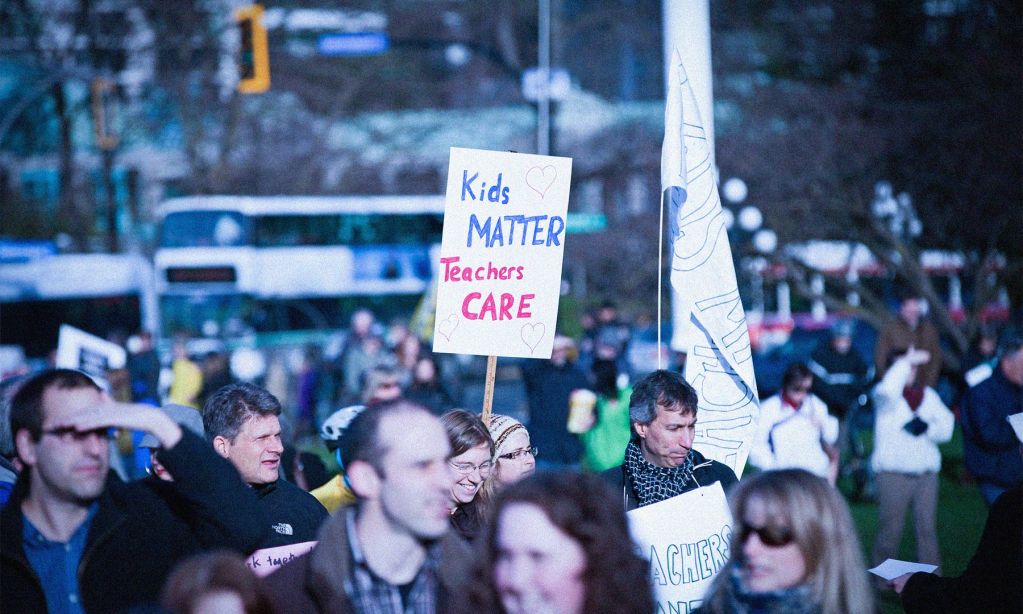For the first time in more than a decade and for only the fourth time since 1973, people in Saskatchewan are facing interruptions to schooling due to teacher labour unrest.
While a Jan. 16 province-wide teachers’ strike means only a single day of job action, there is a real possibility strike actions could escalate over the next few weeks.
That’s particularly the case with 90 per cent of Saskatchewan Teachers’ Federation (STF) members having participated in an October vote about job action against the government — and 95 per cent of those voting teachers backing job action.
The strike follows early December news that conciliation talks between the STF and the Government of Saskatchewan had broken off.
According to the teachers’ union, the central issues in this dispute are class size, “classroom complexity” (the diversity of student needs in any one classroom,), related support for students, workplace violence, meaningful actions to reconciliation education and other in-class issues.
For their part, teachers have not made their wage demands public, suggesting that for them, wages are not the central issue in this round of bargaining.
Both conservative commentators and the premier have argued the bargaining table is not the place for teachers to negotiate concerns about classroom issues.
The province, focused on wages, has tabled an offer that keeps wages at below inflation levels for the next three years.
In other provinces, teachers’ unions have successfully argued that classroom size is directly related to workload, which has always been a collective bargaining matter.
Although bargaining is sometimes interpreted narrowly as a discussion over wages and benefits it is not, by its nature, limited to that. Bargaining can — and has — acted as a democratic tool to expand public resources to areas beyond workplace compensation.
Bargaining classroom size
In Ontario, the Elementary Teachers’ Federation of Ontario has negotiated that the boards and government provide ongoing classroom size data to the union in order to determine future classroom ratios.
The Ontario Secondary School Teachers’ Federation has language on class size in its collective agreements with specific classroom ratios.
Similar negotiations have occurred in Québec over workload issues.
The British Columbia Teachers’ Federation won a dramatic ruling before the Supreme Court of Canada in 2016. The court ruled the government’s decision to unilaterally prevent teachers from bargaining classroom size and composition was a violation of their constitutional rights to bargaining collectively.
The decision resulted in hiring hundreds of new teachers to address chronically underfunded classrooms in that province.
Cuts to education
The dispute in Saskatchewan did not come out of nowhere. There has been a 10 per cent drop in per-student funding since 2012-2013.
In 2017, the Saskatchewan Party government cut funding to public education by $22 million from the previous fiscal year. In the same period, enrolments have risen to record numbers.
These issues pushed teachers to a collective bargaining dispute in 2019, but it was interrupted by the COVID-19 pandemic.
Staffing crises
Post-pandemic, teacher morale and turnover have reached crisis levels.
Samantha Becotte, the STF’s president, noted there has been a general crisis in education across the country evident in teacher shortages, with an attrition rate of about 40 per cent among educators in the first five years of their careers.
Becotte’s comments align with research showing attrition rates have hovered at close to 50 per cent over about the last decade.
Government underfunding has also led to creeping privatization.
Squeezed board budgets have meant an increase in fees to some Saskatoon and Regina parents for lunch-time supervision.
These cuts have also resulted in dramatic declines in classroom supports. Numbers have dropped for many educational roles, including for educational assistants, English as an additional language teachers, counsellors, librarians, psychologists and other pathologists.
‘Parents rights’ issues
On top of this, the government called a special session of the legislature in September 2023 to bring in a hastily drafted bill to restrict the ability of transgender and gender-diverse children from being able to identify with their preferred pronouns at school.
The government said this was an issue of parents’ rights. Yet many others interpreted it as an attack on the ability of teachers to provide necessary support and guidance to kids in a safe and supportive environment.
For some, it speaks to a hostile position of the government towards teachers, since the STF has opposed the policy and pledged support for teachers who refuse to abide by it.
Bargaining as important tool
Trying to prevent teachers from including issues surrounding unmet student needs in bargaining is to effectively leave the public in the dark on the conditions of our schools and render governments largely unaccountable.
The most important tool that all unionized workers have at their disposal is their ability to collectively bargain.
As researchers with the Center for Innovation in Worker Organization at Rutgers University have documented, unions across North America have leveraged broad public support to bargain for issues related to the common good.
Many of these campaigns have been waged by teachers’ unions. Unions have bargained for many things, including linguistic and cultural resources for teachers, more diverse staffing, anti-racism education, green education — and importantly for teachers in Saskatchewan — smaller classroom sizes.
Unions driving change
Unions beyond the education sector in Canada have made similar gains.
For example, in 1981-1982, the Canadian Union of Postal Workers (CUPW) waged a strike to extend paid maternity leave benefits to workers. CUPW’s success encouraged other unions to take a similar position and today public maternity/paternity leave is a universal public program.
Unions and their members have real power when they use the tools available to them to seek real workplace and community change.
Bargaining about trade-offs
To be sure, bargaining is about trade-offs. Prioritizing issues related to what unions identify as key “common good” themes might mean that other issues cannot be highlighted.
Workers might forego larger wage increases for smaller classroom sizes or for increased resources for issues like reconciliation with Indigenous nations.
But that is a choice workers will democratically make through their union. In the case of Saskatchewan teachers, the numbers do not lie. While salaries and benefits will always be an issue, there is overwhelming teacher support for existing bargaining proposals.
We believe this democratic mandate is significant — and one that could lead to safer and more just educational experiences for workers and students across the province
This article has been republished, with permission, from The Conversation.









